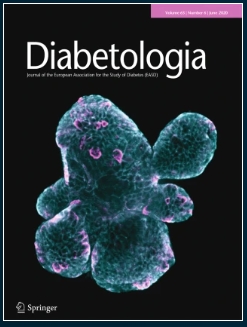全球糖尿病研究中的种族、民族和血统:应对复杂性以促进公平和科学完整性——一种叙事回顾和观点。
IF 10.2
1区 医学
Q1 ENDOCRINOLOGY & METABOLISM
引用次数: 0
摘要
全球糖尿病负担——包括2型糖尿病、1型糖尿病和妊娠糖尿病等主要形式——不成比例地影响着非欧洲血统的人,他们中的大多数生活在低收入和中等收入国家。糖尿病风险和表型的异质性表明,主要来自欧洲人的知识可能不容易转移到其他群体。在这篇综述中,我们的目的是通过支持不同人群的纳入,确保人群定义的清晰度和鼓励对人群差异的探索来提高糖尿病研究的质量。我们回顾了用于定义种群的术语,并就这些术语的使用提出建议。我们认为,人口成员本身并不能决定风险或对干预的反应;相反,它是遗传、环境、社会文化和政策因素的共同作用,是因果关系,应该加以确定。我们注意到,虽然常见的糖尿病形式是多基因的,人群不太可能携带单基因,但影响生活方式和生物学的环境变化明显改变了糖尿病的风险,并为有效干预提供了机会。同样,虽然遗传变异与不良事件相关,但群体成员有时可能不是这些变异的有效代表,这对医疗公平有影响。对于大多数用于糖尿病的药物,几乎没有证据表明药物反应性因人群分组而有实质性差异,尽管直到最近才进行了精心设计的研究。相反,其他人群特征,如性别、年龄和肥胖,似乎会改变降糖药物的效果,在开处方时应予以考虑。如果我们要与糖尿病的全球负担作斗争,就必须将不同人群纳入糖尿病研究,并结合多学科方法。本文章由计算机程序翻译,如有差异,请以英文原文为准。
Race, ethnicity and ancestry in global diabetes research: grappling with complexity to advance equity and scientific integrity - a narrative review and viewpoint.
The global burden of diabetes-across major forms such as type 2 diabetes, type 1 diabetes and gestational diabetes mellitus-disproportionately affects people of non-European ancestry, the majority of whom live in low- and middle-income countries. The heterogeneity of diabetes risks and phenotypes indicates that knowledge derived principally from European-origin populations may not be readily transferable to other groups. In this review our aim is to enhance the quality of diabetes research by championing the inclusion of diverse populations, ensuring clarity of population definition and encouraging exploration of population differences. We review the terminology used to define populations and make recommendations on the use of these terms. We argue that population membership by itself does not determine risks or response to intervention; rather, it is the confluence of genetic, environmental, sociocultural and policy factors that are causal and should be identified. We note that, while common diabetes forms are polygenic and populations are unlikely to harbour single genes that account for significant risk, environmental change that impacts lifestyle and biology demonstrably alters diabetes risk and provides opportunities for effective intervention. Similarly, while genetic variants are associated with adverse events, population group membership may sometimes not be a valid proxy for such variants, which has implications for healthcare equity. For most drugs used in diabetes there is little evidence that drug responsiveness materially differs by population grouping, although it is only recently that well-designed studies have been performed. In contrast, other population characteristics, such as sex, age and obesity, appear to alter glucose-lowering drug effectiveness and should be considered when prescribing. Inclusion of diverse populations in diabetes research, combined with a multidisciplinary approach, is essential if we are to combat the global burden of diabetes.
求助全文
通过发布文献求助,成功后即可免费获取论文全文。
去求助
来源期刊

Diabetologia
医学-内分泌学与代谢
CiteScore
18.10
自引率
2.40%
发文量
193
审稿时长
1 months
期刊介绍:
Diabetologia, the authoritative journal dedicated to diabetes research, holds high visibility through society membership, libraries, and social media. As the official journal of the European Association for the Study of Diabetes, it is ranked in the top quartile of the 2019 JCR Impact Factors in the Endocrinology & Metabolism category. The journal boasts dedicated and expert editorial teams committed to supporting authors throughout the peer review process.
 求助内容:
求助内容: 应助结果提醒方式:
应助结果提醒方式:


